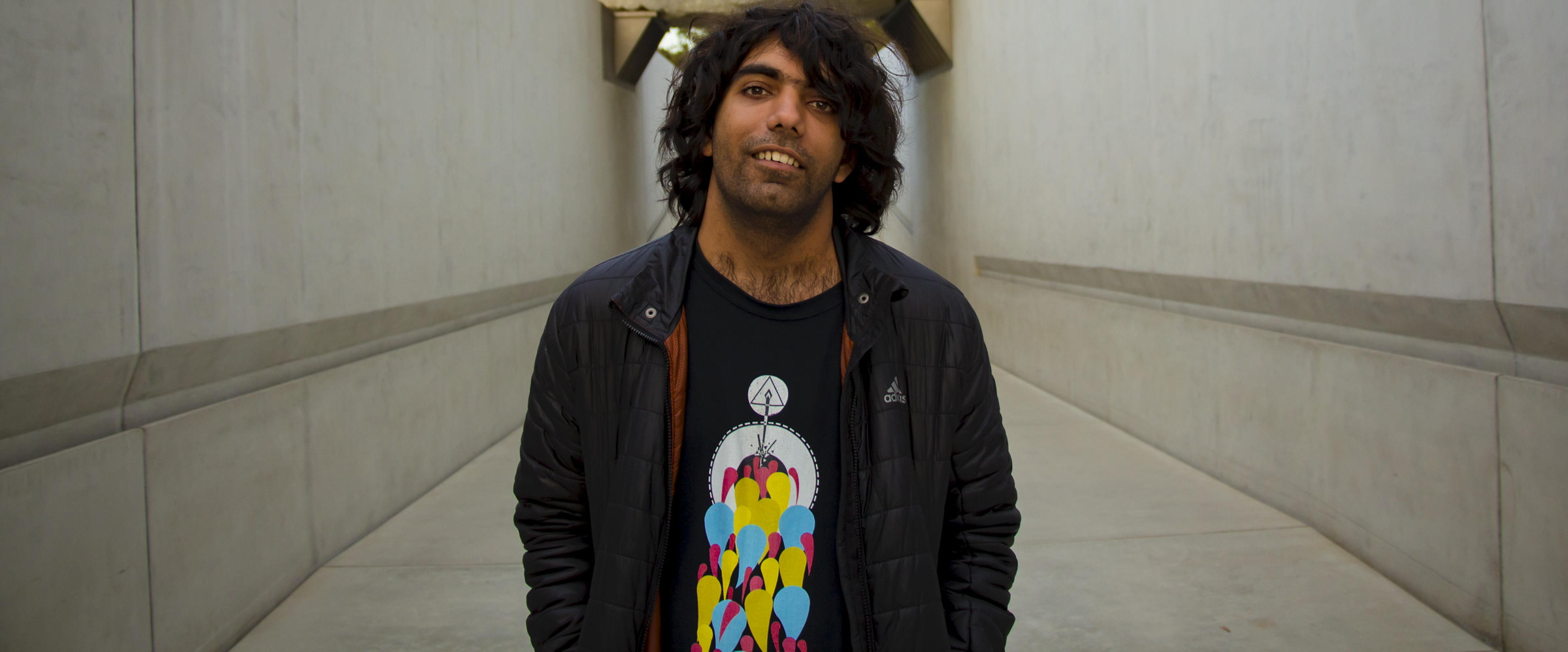
Interview: Horror Composer Antriksh Bali
Tim Burton meets James Bond meets Nine Inch Nails is what we think of when listening to composer Antriksh Bali’s track, Inside the Palau. Bali’s use of minimalism and industrial sounds bring haunting, yet hip, tunes. His creations show knowledge of music, from legato to staccato, and passion for the craft. Follow along to learn more about the world of making music for horror films and this worthy person behind the mask.
With all the creative outlets available to you, why compose music?
My connection to music goes back to when I was a child. I started learning classical piano when I was 10. Over time, my connection to music helped me to process a lot of things in life I would find hard or difficult to deal with.
Being an introvert, I often keep a lot of things to myself and keep emotions bottled up for really long periods of time. When I started taking piano lessons, I found a medium of expression I could pour my feelings into. It felt rewarding and made it easier to cope with the hustle and bustle of daily life. This is the reason I compose music, it keeps me sane. More importantly, helps me to have a purpose and goals to work toward in life.
Why Horror?
I’m an artist with a morbid curiosity and I have always liked to explore crevices and cracks of the human psyche which people tend to run away from. I started watching a lot of horror movies when I was a teenager. I’ve been a self-confessed ‘closet-goth’ ever since. As a composer, most projects I have worked on have horror or gothic influences.

What pushes me as a composer toward this genre, is it lends itself to experimentation and unconventional ways of thinking about music. Moreover, the dark and scary is what attracts me because I’ve always seen horror as self-exploration. If you don’t really understand what scares you, how are you going to find out what you love?
Tell us about your creation process.
Typically, it starts with a discussion with the director or filmmaker about what kind of music they’re looking for to include in their film. They usually send a copy of the script or a ‘picture lock’, which is a finished copy of the film without a music score. Usually, a spotting session follows, where the discussion continues about which places the filmmaker might need music or score in their film. This is followed by a first draft of the score, which is either followed by a few edits, or requests for changes. Eventually, the finalization of the score occurs.

Later on, I often try to find spots in the film where there might be clues to what the music is supposed to be like. Perhaps I notice a ticking clock or faint background tones of noise or feedback, which I then address. Sometimes the scenes are dialog heavy, which brings challenges. The music often follows the rhythm and pacing of the film, which also brings it’s own challenges. Sometimes the music gets faster or slower, depending on what the ‘plot-curve’ of the film may be.
I often see making music as a puzzle to be solved; there are a million different ways to solve a puzzle. In horror movies, I feel that a lot of times the stories might be the same, but how they’re told always keeps changing, which is quite exciting. I like to try everything that comes into my head and it’s a pretty wild ride!
Which piece are you most proud of, and why?
One piece I’m really proud of is a modified, heavily modulated, creepy version of Twinkle Twinkle Little Star, which I created for a short film I did some time back called Chintamani. The reason I’m most proud of it is because it presented me with a unique challenge. On one hand, it had to be scary enough to grab and grasp them suddenly, but on the other hand, it had to complement the singing happening in and around the scene in an early cut of the film.

How do you turn a nursery rhyme into something more deviant and dark, yet playful enough to keep people interested? I had to go through several revisions with the filmmakers before the entire score was finalized. While I think I might have modulated it to the point of it eventually sounding like the furthest thing from the original nursery rhyme, it was really cool to approach a happy song and to turn into something terrifyingly dark. That’s what I live for!
List some of your favorite composers or pieces and tell how your work has been influenced by them.
Some of my favorite composers/influences would be: Bernard Herrmann and his score for Vertigo (1958), The Haxan Cloak’s album, Excavation, featuring the song Mara, and Nine Inch Nails. I think Bernard Herrmann was one of the pioneers of incorporating elements of dissonance into orchestral scores. His work on all the Hitchcock films have always been a major source of inspiration.
The Haxan Cloak album in particular was interesting to me because I felt the concept of minimalism was used to create some truly terrifying soundscapes.

A lot of my music incorporates electronic, or industrial, music with orchestral elements, and NIN was the band that first got me into industrial music, so they’ve always been a source of inspiration too.
The Shining (1980) score by Wendy Carlos has also been a huge source of inspiration because synths play a major part in it. It’s always been a goal I work toward, to incorporate the sound of synths into my work.
Where can we find your work?
My composing work can be found on my website, and my music can be found at any of the following places:
- Spotify
- Bandcamp
- Soundcloud
- All other major music stores

You can find and follow me and my achievements at any of the following places:
- Facebook @antrikshmusic
- Twitter @antrikshbali
- Instagram @antrikshbali
What do you think of our interview? Who should we interview next? Check out some of our other interviews with Horror Artist John Clayton, or Horror Comic Author Jesse James Baer. Drop us a hint in the comments below or find us at the following places:
- Facebook @Parzz1val
- Twitter @HauntedMTL or @Parzz1V
- Email @ parzz1val@yahoo.com
Interviews
T+E Channel’s My Haunted Hometown: Small Town with Big Secrets
My Haunted Hometown interview – Barb Dexter
To start off check out our exclusive interview with Barb Dexter from My Haunted Hometown! Prepare for spine-tingling tales as Barb Dexter unveils her shocking personal ghost encounters on T+E Channel’s gripping paranormal series, “My Haunted Hometown”. Don’t miss exclusive behind-the-scenes insights and emotional revelations that will leave you questioning reality. Premieres Friday, September 6th at 10 PM ET/PT.
Click the trailer for My Haunted Hometown and set your clocks for the premiere 6 Sept!
Want to know more about T+E Channel’s My Haunted Hometown?? Check out the trailer below (and make sure you watch the show as it airs Friday 6 September, 10PM PT/ET only on T+E!
If you ever wondered what it was like to be in a town with a dark history–and live in a forever home that might be forever occupied by spirit energy, then you need to check this episode out!
Why T+E Channel’s My Haunted Hometown hits
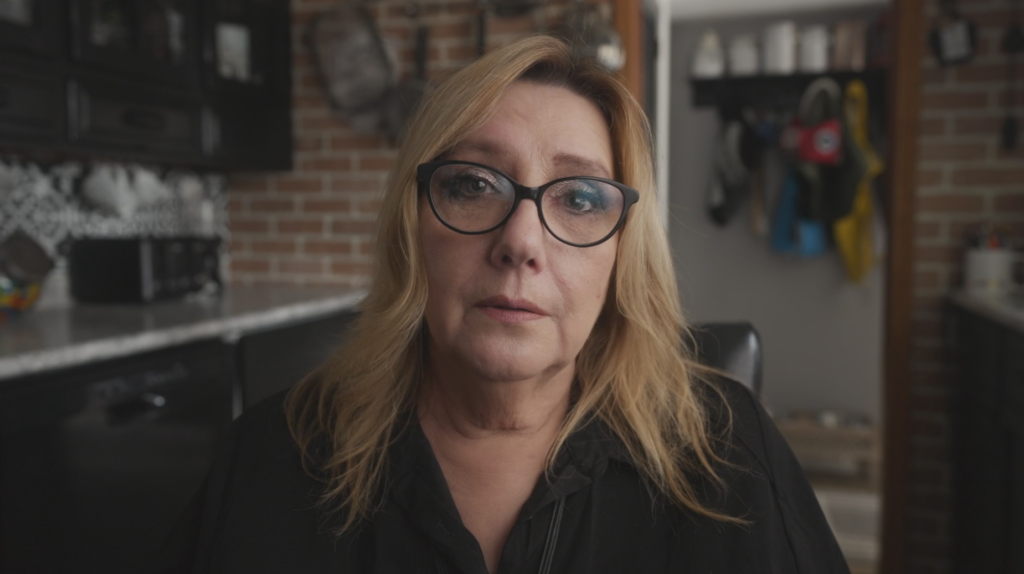
The production value works. The camera. The crew. The sound. The editing. The PR team. These are all great assets–and the best asset of them all? The people in the show.
We have all seen shows where the ghost story is made up. It’s usually some quick cash grab for a celeb (although there were some great truly well done celeb ghost stories, too!) or just some channel/content filler type thing. This is not that….this is what every ghost show should be.
The crew sits down. The people are taken seriously. They are giving a channel to voice their story and by sharing their story, they get to grow and sometimes heal from the telling. We draw strength in knowing we are not alone.
When the episode starts, your emotions range from being afraid for the people to being all warm and fuzzy with knowing that these people are opening themselves up to you and you are not alone.
If you have any paranormal experience, these stories will help you feel a bit more whole.
If you are a believer, this is your show.
If you are a doubter, this is your show. You might still doubt, but you won’t doubt that these are real down to earth people giving witness to what they saw.
See why we call the T+E Channel the Blumhouse of TV and catch the free preview on T+E Channel from Sept 2 to Nov 3
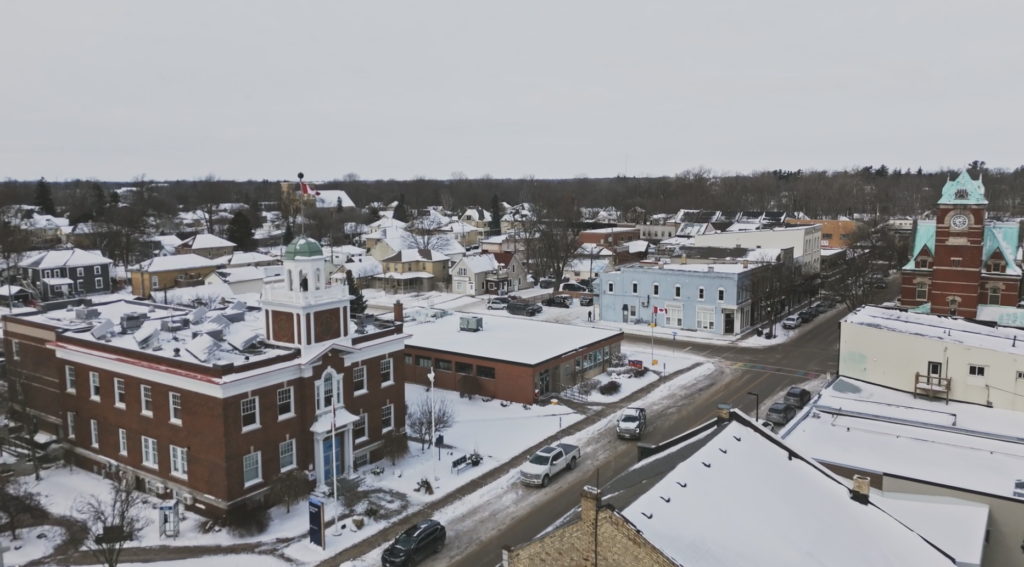
The Setting
I think small towns work well as a setting. If you recall most of Seth Breedlove’s movies are SMALL Town monsters. If you recall our interview with Harker Jones’s interview the scary horror wasn’t the city of LA but the SMALL Town where you are a bit more isolated.
Not only does the setting work because of the more remote feel, but it works because of the people. The people in the show make the show. They are relatable. They are down to earth. They are easily your next best friend after moving into the neighborhood.
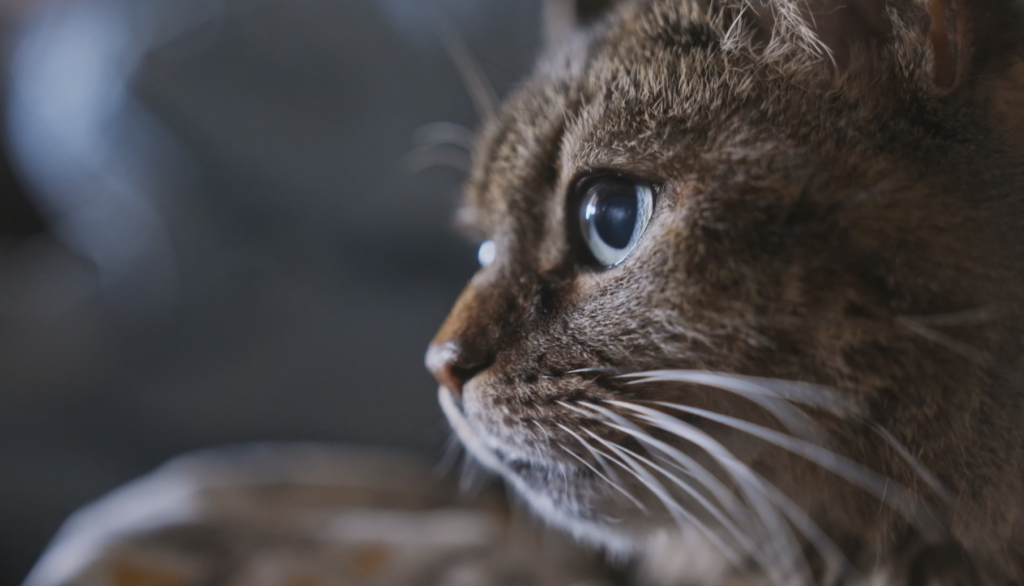
Also, if you are a fan of cats and dogs–there are a few of the most adorable furry friends ever in this episode.
The Rating and Where to Watch
After watching the first episode, I can’t wait for the rest! I’m sure to check it out when they drop every Friday in September! Won’t you join me? 🙂
See what all the rave reviews are about (5/5 Cthulhu!) and see why we call the T+E Channel the Blumhouse of TV and catch the free preview on T+E Channel from Sept 2 to Nov 3 – your gateway to the supernatural! Tune in and share the thrills with #MyHauntedHometown and #TEonTV. Are you brave enough to watch?
 (5 / 5)
(5 / 5)
Gaming
🎮 Eldritch Automata: Exclusive GenCon 2024 Reveal with Nick Francia!
Step into the mind-bending world of Eldritch Automata as we sit down with Game Designer Nick Francia at GenCon 2024!
Uncover the secrets behind this Lovecraftian mecha-masterpiece and get a glimpse of what’s to come.
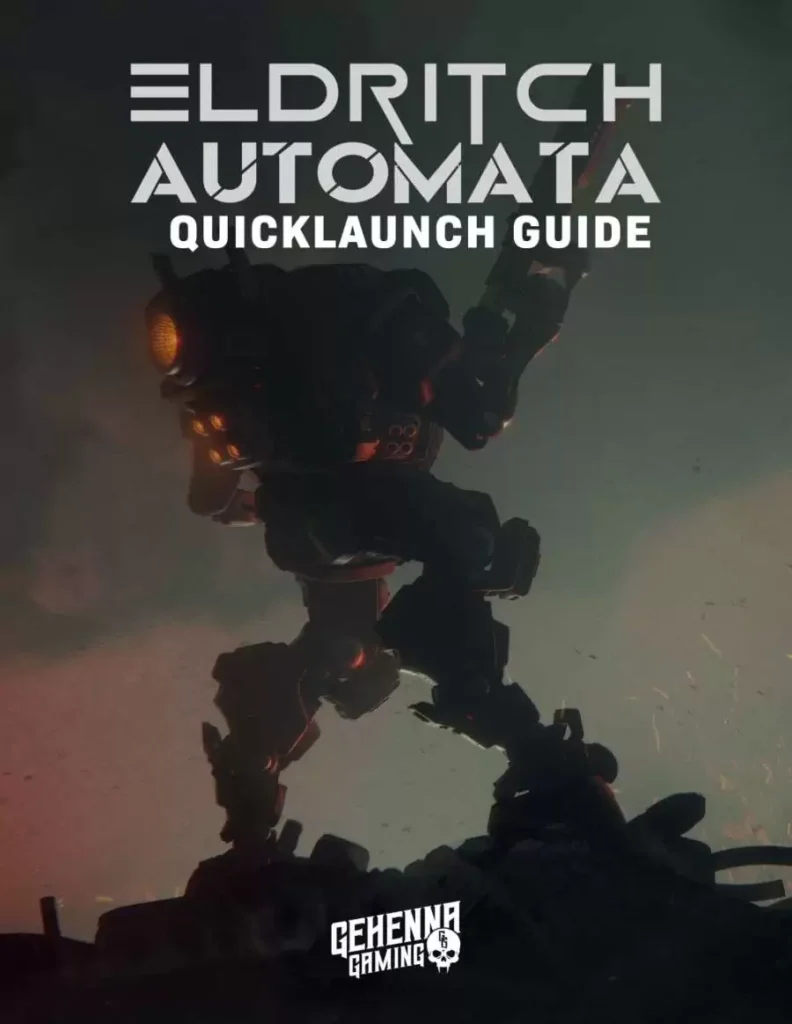
In this exclusive interview, Nick Francia shares:
• The intricate game development process • Inspirations behind the eerie Lovecraftian elements
• Unique mecha-infused gameplay mechanics Calling all Lovecraft fans! Dive into a world where eldritch horrors meet steam-powered marvels.
Eldritch Automata promises an unforgettable gaming experience that will keep you on the edge of your seat.
👉 Ready to embrace the madness? Check out our playable demo at a con near you! #EldritchAutomata #GenCon2024 #LovecraftianGaming #IndieGameDev
Gaming
Interview with Creative Director Michael Highland: Let’s! Revolution! @ PAX
Another game I had the chance to play at PAX East was, Let’s! Revolution!, a Minesweeper-inspired roguelite puzzle game by animation (and now game) studio, BUCK. I talk more about the game itself in another post. Here, I wanted to highlight the conversation I had with Michael Highland, the Creative Director for Let’s! Revolution! and his journey through video game development.
How did you become involved in video game development?
I studied digital media design in college; this was before there were many programs dedicated to game development. After graduating, I self-published a mobile game called Hipster City Cycle with friends. Over the next few years, I slowly got more freelance work as a game designer, and eventually landed a full-time role at thatgamecompany working on the follow-up to their 2012 GOTY Journey. I worked my way up there and was eventually the Lead Designer on Sky: Children of the Light. Working at thatgamecompany opened a lot of doors professionally. I eventually wound up at BUCK, where I saw the opportunity to help establish a new game studio within a very vibrant existing creative culture.
What has been the most challenging aspect of the development process?
Each studio has its own unique issues based on the people involved. There are commonalities like the need to fight feature creep and building consensus around ideas early in the process when all you have is an abstract grey box prototype to react to. At BUCK the biggest challenge has been channeling the abundance of creative energy and talent into a shippable product. There’s a ton of enthusiasm for games within the company, and without clear product-centric goals (who is the target audience, what platform are we releasing on, what’s the marketing strategy), projects have the tendency to spiral out of scope. Another challenge has been building credibility with publishers. BUCK has an amazing pedigree for animation and design, maybe the best in the world, but when we initially pitched ideas to publishers, they all said the same thing: looks great, but until you’ve shipped a game, you’re too high-risk. That’s what led to us self-publishing Let’s! Revolution! Now that we have a well-reviewed game out in the wild, I feel confident we’ll have more luck with publishers.
BUCK primarily has its roots in animation, what led the decision to start branching into video game development?
It started with a general excitement about the medium and a desire among the staff to work on a game. Leadership at BUCK is all about providing the staff with exciting creative opportunities, and getting to work on a game, is, for some, a creative dream come true. And putting BUCK content out in the world is a point of pride and a boost to morale. From a business perspective, the fact we can staff out game projects with the top animation and design talent in the world is a huge advantage. We’re already starting to see new opportunities for the service side of the business based on the success of Let’s! Revolution!
The art, unsurprisingly, is delightful. What were some of the priorities during the character design process and how did those influence the final hero designs?
Our Art Director Emily Suvanvej really led the charge on the look of the game. There are obvious influences like Studio Ghibli, Moebius, and Steven Universe. My shared goal with Emily was to make something together that reflected the diversity of the team’s artistic and lived experiences. The artists put so much love into the character designs and animation, it really shows.
Some of the primary game mechanics take inspiration from Minesweeper, what was the process like to create your own interpretation of those classic mechanics?
This article goes into depth on this topic. The TLDR is that we took a very iterative approach, at each stage trying to identify what was working about the prototype and lean into that. The initial game concept came together relatively quickly in part because our goal for this project was just to finish a game. We just focused on what was good and kept building on it. I wouldn’t say the final game is “perfect” – but we wound up with a much bigger and higher quality experience than I expected by not letting perfectionism get in the way of making good better.
Is there anything else you would like to plug or that you think is important for people to know about Let’s! Revolution! or other upcoming projects?
The music and sound design for the game is stellar. We worked with a creative audio company called Antfood and they knocked it out of the park. The audio got an honorable mention from IGF, which I think is extra impressive because most of the other games were audio-centric titles with some unusual hook to the sound design. For the OST, Antfood reworked all of the music from the game into a continuous flow, like a concept album. It’s so good. I love working with them.

